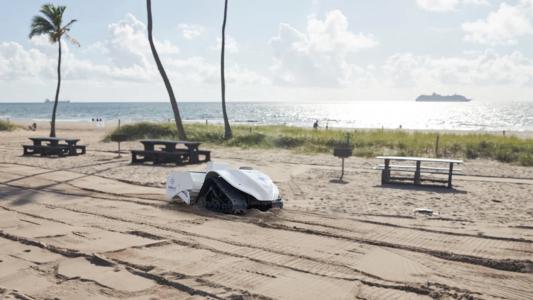This article is an installment of Future Explored, a weekly guide to world-changing technology. You can get stories like this one straight to your inbox every Thursday morning by subscribing here.
A new type of EV battery has just entered the big leagues.
On July 29, the world’s biggest battery maker for electric vehicles (EVs) became the first major manufacturer to unveil a sodium-ion battery — a cutting-edge technology that proponents hope will revolutionize the world of electric cars.
The sodium-ion battery promises to be cleaner, safer, and cheaper — as well as charging quickly and performing better in extreme weather — than the lithium-ion batteries you’ll find in almost every EV today. But will the reality match the hype?
Why it matters: Lithium-ion batteries have a high energy density, meaning they can store a lot of charge relative to their weight. That’s made them well-suited for powering EVs, since heavier batteries will reduce the car’s range.
However, mining lithium is expensive, environmentally destructive, and requires a lot of water — about 500,000 gallons per ton of lithium.
Sodium is cheaper, easier to extract, and 1,000 times more abundant than lithium.
That’s particularly problematic because more than half the world’s lithium supply happens to be in one of the driest parts of the planet, so farmers are forced to compete with lithium miners for scarce water supply.
Lithium is also relatively rare, and increased demand is already causing the element’s cost to skyrocket. Higher battery costs mean higher EV costs, so we’re going to need to explore alternative types of batteries if we want more people to trade in their fossil fuel-powered vehicles for EVs.
A salty solution: Battery developers see sodium-ion tech as an attractive alternative to lithium batteries.
Sodium is cheaper, easier to extract, and 1,000 times more abundant than lithium. Sodium-ion batteries can operate at a wider temperature range, which could make them particularly attractive to drivers in places that are extremely cold or hot.
They’re also non-flammable, meaning EV owners wouldn’t have to worry about their cars spontaneously catching fire — a pretty major added bonus.
What’s new: China’s Contemporary Amperex Technology Co. (CATL) is the world’s biggest EV battery maker, providing batteries to Tesla, Volkswagen, and other car makers — and after years of development, it’s finally adding a sodium-ion battery to its product line.
This sodium-ion battery can charge quickly, according to CATL, reaching 80% capacity in just 15 minutes (exactly how far that would get a driver would depend on the EV). It also performs well at sub-zero temperatures.
“CATL producing large scale sodium-ion batteries shows the technology’s appeal is coming to fruition sooner rather than later,” Max Reid, an analyst at energy research and consultancy firm Wood Mackenzie, said in a statement.
The catch: CATL’s new battery suffers from the same issue that’s long held back sodium-ion tech: it can’t match the energy density of a lithium-ion battery.
In other words, the battery has to be heavier, which means the car wastes more of its energy hauling its own battery around, reducing its range.
CATL’s combination battery could provide the best of both worlds.
It’s also hard to put the charging time of CATL’s battery into context because we don’t know what type of charging station is needed to achieve 80% capacity in 15 minutes. (It’s probably not your average home setup.)
There are already EVs on the market that can reach 80% capacity in 30 minutes at fast charging stations — and because their lithium ion batteries are more energy dense, drivers may get more range for their time.
Two-fer: To address some of the limitations of sodium-ion batteries, CATL has also announced the development of a single system that features sodium-ion and lithium-ion batteries.
This could provide the best of both worlds, delivering the higher energy density of lithium-ion batteries, along with the advantages of sodium-ion tech, such as great performance at low temperatures.
The bottom line: CATL plans to continue developing its standalone sodium-ion battery, with the goal of increasing its energy density from the current 160Wh/kg to 200Wh/kg.
That still won’t put it on par with some of the lithium-ion batteries already on the market — the one in Tesla’s Model 3, for example, has an estimated energy density of 250 Wh/kg — but the other benefits of sodium-ion batteries might make up for their shortcomings.
“Nothing may ever surpass lithium in performance,” Zhenan Bao, a chemical engineer at Stanford University, said in 2017. “But lithium is so rare and costly that we need to develop high-performance but low-cost batteries based on abundant elements like sodium.”
We’d love to hear from you! If you have a comment about this article or if you have a tip for a future Freethink story, please email us at tips@freethink.com.
